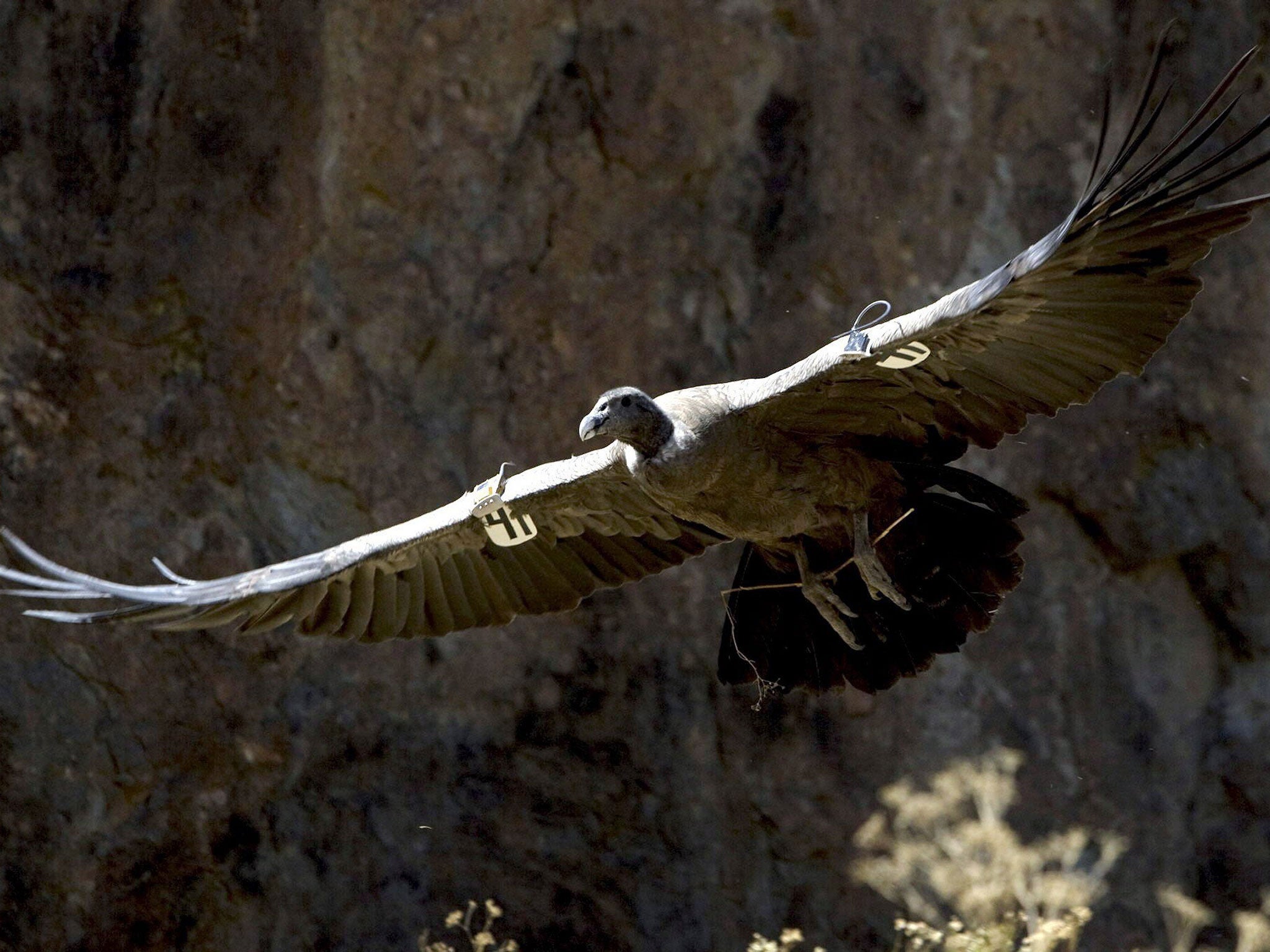Your support helps us to tell the story
From reproductive rights to climate change to Big Tech, The Independent is on the ground when the story is developing. Whether it's investigating the financials of Elon Musk's pro-Trump PAC or producing our latest documentary, 'The A Word', which shines a light on the American women fighting for reproductive rights, we know how important it is to parse out the facts from the messaging.
At such a critical moment in US history, we need reporters on the ground. Your donation allows us to keep sending journalists to speak to both sides of the story.
The Independent is trusted by Americans across the entire political spectrum. And unlike many other quality news outlets, we choose not to lock Americans out of our reporting and analysis with paywalls. We believe quality journalism should be available to everyone, paid for by those who can afford it.
Your support makes all the difference.The Andean condor, one of the world's biggest flying birds, is in trouble. It may have a 10ft wingspan that enables it to ride warm air currents for hours at a time, but that has proved little protection against habitat destruction and hunting.
The bird's numbers have fallen dramatically. So much so that a Bill is being introduced into the Peruvian congress that would start a conservation programme, declare the condor a national treasure, and set jail sentences of between three and five years for capturing or killing the birds.
It is not before time. Yuri Ortiz de Zevallos, a condor catcher for decades and now the mayor of the Cotabambas district in the region of Apurimac, is concerned about declining condor numbers. "When I was young we could see 20, 30, even 40 condors gather around when we laid out the bait," said the 50-year-old. "Now you will see maybe five or 10."
There are no reliable figures for how many condors live in the Peruvian Andes today, and scientists say no exhaustive studies have been carried out there. Jose Antonio Ochoa, a biologist in southern Peru who works with the Frankfurt Zoological Society, said all the anecdotal evidence suggests an alarming decline in Peru, and put the population today at no more than 500.
The condor's survival in Peru is threatened by shrinking habitat due to development, including large mining projects in the highlands, and the trafficking of its feathers and other body parts. And since fewer livestock now get lost and die, a once-reliable supply of carrion for the bird has been reduced.
Andean condors, which can fly more than 100 miles (160km) in a single day, used to be connected all along the mountains from Argentina to Venezuela as a single population. Because fragmented groups no longer integrate, over the long term they risk heading towards a genetic bottleneck, the point at which in-breeding can result in defects or infertility.
Michael Mace, a bird specialist at the San Diego Zoo Safari Park, said Peru could benefit from a captive breeding programme. In the late 1980s, the United States started a successful captive breeding programme for the California condor, a different and slightly smaller species, after the population dwindled to just 22. Now that population stands at more than 400, with more in the wild than in captivity.
Andean condors do not start reproducing until they are around five years old, and lay only one or two eggs at a time in nooks of remote canyons every other year.
Scientists at the San Diego Zoo Safari Park say they have successfully released Andean condors in other South American countries. At least 12 have been released in Venezuela, where they had been locally extinct since 1965, and 74 in Colombia, where some have already hatched offspring in the wild.
Mr Ochoa said serious research and a national conservation programme in Peru are long overdue. He and his colleagues are seeking funding for a year-long programme to conduct a census, and put tracking devices on condors to determine how many there are and how best to halt their decline.
One of the legislation's supporters, Elmer Caceres, mayor of the province of Caylloma where donkeys are slaughtered every week to leave as food for the condors, said there might not be much time left. He said the Colca Canyon, a popular tourist destination twice as deep as the Grand Canyon, is now home to just 25 condors, a fraction of the population in years past. Some 80 per cent of the region's visitors come to see the birds. "Condors create jobs and revenues in my community," he said. "And they connect me to my ancestors and my culture." (Reuters)

Join our commenting forum
Join thought-provoking conversations, follow other Independent readers and see their replies
Comments